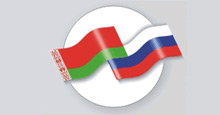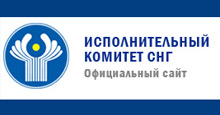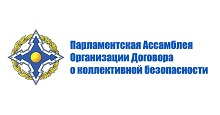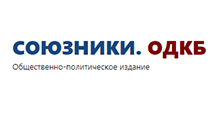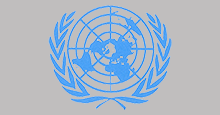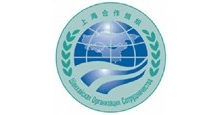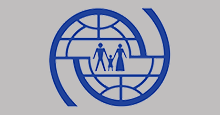The 23rd meeting of the Military Committee on military cooperation development among the CSTO member states under the supervision of the Chairman of the Military Committee, Chief of the General Staff of the Armed Forces of the Russian Federation - First Deputy Minister of Defense of the Russian Federation, Army General Valery Gerasimov, took place today via videoconferencing.
From April 8 to 11, 2024, the XXI International Seminar-Meeting on Combined Martial Arts with the heads of combat and physical training of the security ministries and agencies of the CSTO member states took place at the Park Hotel "Horizon", Odintsovo District, Moscow Region.
The event was addressed by Gennady Troislit, the Deputy Head of the Organizational and Planning Department of the CSTO Secretariat, and Oleg Ufimtsev, the President of the Russian Federation of Combined Martial Arts.
Zvezdaweekly.ru "Channel", leading to Eurasia without drugs
25.01.2019CSTO member states block the spread of killer potion
January 25, 2019, 06:23

© odkb-csto.org
 Collective Security Treaty Organizations - the framework of a common safe home.
Collective Security Treaty Organizations - the framework of a common safe home.
The most important element of the common safe house framework, which the member states of the Collective Security Treaty Organization (CSTO), which unites Armenia, Belarus, Kazakhstan, Kyrgyzstan, Russia and Tajikistan, is consistently and methodically building in Eurasia, is a system of protective measures aimed at the increasingly ominous nature of the drug threat. And as before, one of the global sources of this threat is the Afghan region, whose territory has been turned into the zone of undivided management of drug traffickers operating there with the connivance of the United States, which for 18 years has been carrying out Operation Enduring Freedom in the IRA.
Opium Klondike
According to the UN Office on Drugs and Crime (OTN), only for 2016-2017. world opium production increased by 65% to 10,500 tons. This is the highest mark ever recorded since the beginning of the monitoring of world opium production in the twenty-first century.

 9,000 tons of opium in 2017 came from Afghan provinces
9,000 tons of opium in 2017 came from Afghan provincesOf this volume, the “lion’s share” of opioid products - 9,000 tons - came from the Afghan provinces. Despite a slight reduction in drug production in Afghanistan in 2018, caused by drought, there are enormous stocks of opiates produced in previous years in its territory.
By not hindering the cultivation of opiates in the area of its military presence, the United States contributes to “channeling” this destructive potion in the direction of its geopolitical opponents, primarily Russia and China, thereby undermining their demographic potential and delaying resources to counter drug crime, treatment, rehabilitation and resocialization of individuals admitting non-medical drug use. Due to these circumstances and its geographic location, almost all the CSTO member states found themselves in the epicenter of the so-called “northern route”, which connected the Afghan drug market with underground markets in Russia and Central Asian countries.
 Маршруты распространения опиатов из Афганистана.
Маршруты распространения опиатов из Афганистана.Distribution routes for opiates from Afghanistan.
According to expert estimates, about 25-30% of Afghan opiates are being transferred to drug users via this channel. In addition, the drug business organizers are increasing drug traffic along the Caucasian-Black Sea branch of the “Balkan route”, which also directly affects the anti-drug security of the CSTO states.
Actualization of the anti-drug activities of the States parties to the Collective Security Treaty began from the moment this document was signed in 1992. Even then, the CSTO states agreed that the Afghan drug threat has a pronounced regional character. However, a real breakthrough in the field of practical struggle against illicit drug trafficking within the CSTO occurred only ten years later, when a package of relevant decisions was adopted at a session of the Collective Security Council (CSC) held on April 28, 2003 in Dushanbe. The organization was tasked with raising the level of foreign policy integration and expanding the areas of counteraction against international terrorism, extremism, organized transnational crime, illegal migration and drug business. The Council made a separate decision on the coordination of activities in the anti-drug sector, in accordance with which the Action Plan was developed to combat the external drug threat.
figure>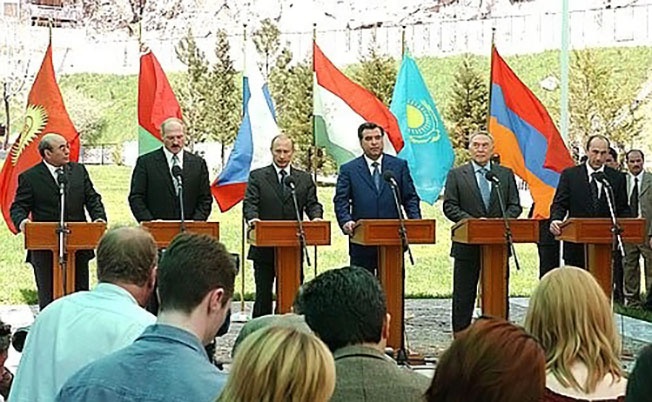

At the session of the Collective Security Council (CSC), held on April 28, 2003 in Dushanbe.
On the initiative of the CSTO
Under this plan, in 2003, for the first time, a comprehensive operational and preventive operation under the code name “Channel-2003” was carried out, aimed at identifying and blocking the routes of illegal drug trafficking in the regions directly adjacent to Afghanistan. An international coordination headquarters was established to guide and manage the operation, consisting of representatives of the competent authorities of the six CSTO states, national and regional interdepartmental headquarters, operational groups of relevant ministries and departments of the CSTO member states. The competent authorities of Iran, China, Uzbekistan, Ukraine and Turkmenistan were also informed about the preparation of the operation, its main tasks, ways of solving them and the timing of the operation. The effectiveness of the operation conducted in 2003 was recognized as successful, and the United Nations International Narcotics Control Board subsequently recognized it as the largest and most effective in countering Afghan drug trafficking.
Taking into account the effectiveness of the annual coordinated activities of the CSTO member states, other countries expressed their readiness to join Channel. Including observers from Azerbaijan, Afghanistan, Bulgaria, Bolivia, Venezuela, Iran, Spain, Italy, China, Colombia, Latvia, Lithuania, Mongolia, Nicaragua, Pakistan, Poland, Peru, Romania, USA, Turkey, Turkmenistan, Ukraine, Finland , Estonia, as well as representatives of Interpol, the OSCE and the Eurasian Group on combating money laundering (EAG).
The CSTO member states organized and conducted Operation Channel.
Taking into account the obvious progress that accompanied the implementation of the Channel, the decision of the heads of the CSTO member states of September 5, 2008 of this operation, carried out annually, was given the status of a permanent CSTO anti-drug operation.
In total, from 2003 to the present, 28 stages of Operation Channel have been conducted. As a result of these activities, law enforcement agencies of the CSTO member states and observers seized 373 tons of narcotic drugs, psychotropic and potent substances, including 16.5 tons of heroin, 55.5 tons of hashish and 6.5 tons of synthetic drugs.
The fact that the Channel every year becomes an increasingly effective tool in the fight against drug epidemics, exciting the entire regions of Eurasia, show the results of the next stage of the international special anti-drug operation Channel Red Barkhan, which took place from September 10 to September 14 year on the territory of Kazakhstan. Its planning was carried out on the basis of the results of the preparatory phase, during which an analysis of the operational situation was conducted, a set of operational search measures were developed aimed at identifying and blocking the channels for smuggling narcotic drugs and psychotropic substances, in particular, through the territory of the Republic of Kazakhstan, the necessary information between interacting bodies.
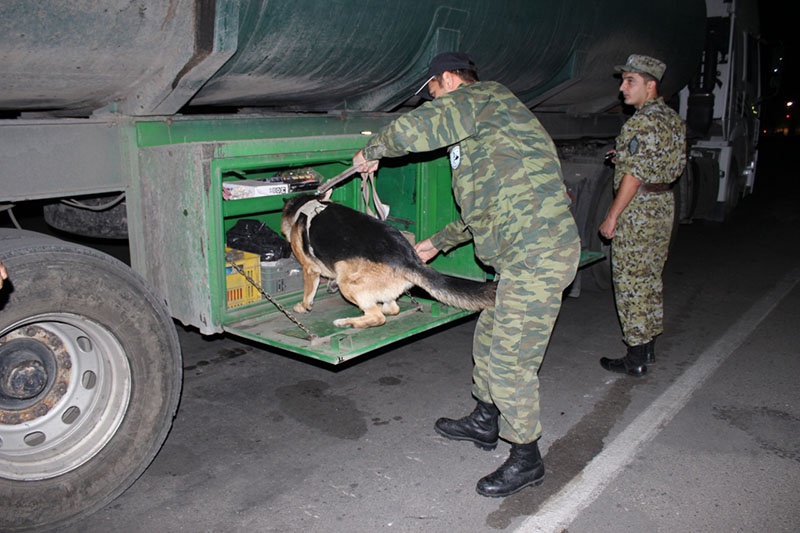

In accordance with the national plans, measures were taken to implement information on the facts and participants in drug trafficking, including the use of operational search and technical units.
Inspection of vehicles at the border
According to the plan of the operation, interdepartmental stationary posts, barriers and mobile task forces were created at the transport infrastructure facilities, control over sections of the state border at checkpoints and in places vulnerable to uncontrolled movement of people and transport across the border was strengthened.
Inspection measures of vehicles, baggage, transported cargo and individuals, special events in transport sludge parks participating in international cargo transportation, measures to identify and suppress drug entry channels using international mail were carried out.
As part of the operation, special operations were conducted in the Kyzylorda and Zhambyl regions of Kazakhstan to identify the habitats of wild-growing plants containing narcotics, including “Indian cannabis”. To this end, with the involvement of special forces and aviation of the National Guard of the Ministry of Internal Affairs of Kazakhstan, which are part of the Collective Operational Response Forces (CRRF) of the CSTO, the participants of the operation were redeployed to the specified regions.
The operation to identify the habitats of wild-growing drug-containing plants.
More than 100 employees of the special unit "Berkut", 15 employees of the operational-tactical subdivision, 155 - internal affairs bodies, 25 investigative-operational groups were involved in the special operations. Used 4 armored vehicles "Tigr", more than 20 different vehicles of increased patency, UAV, helicopter MI-171E.
In addition, during the operation on the basis of the special unit for the fight against drug trafficking “Delta-Dolina” of the Department of Internal Affairs of the Zhambyl Oblast of Kazakhstan, joint exercises and search events were held by cynological services of the MIA of Kazakhstan and Kyrgyzstan.
More than 25.5 thousand employees of the internal affairs agencies, anti-drug services, security agencies, border guards and customs services of Armenia, Belarus, Kazakhstan, Kyrgyzstan, Russia and Tajikistan, financial intelligence units of the CSTO member states . The international coordination headquarters for the operation was deployed in the city of Shymkent (Kazakhstan).
More than 25.5 thousand employees were involved in the operation “Channel - Red Barkhan”
As a result of the coordinated actions of the law enforcement bodies of the participating countries, more than 11 tons of 132 kg of drugs were seized from illicit trafficking, of which 6 tons 533 kg of opium, 930 kg of hashish, 1 ton of 137 kg of marijuana, 88 kg of heroin, 144 kg of synthetic drugs, 2 tons 262 kg of other species, including 1 ton of 663 kg of morphine, as well as more than 33 kg of psychotropic and potent substances.
Representatives of law enforcement agencies of Iran and China, as well as representatives of international organizations such as the OSCE, EAG, UNODC, Interpol, the Central Asian Regional Drug Control Information Center, psychotropic substances and their precursors (CARICC), the Program to Prevent the Spread of Drugs in Central Asia (CADAP).
Drugs seized from illicit trafficking. Seized from illicit trafficking.
All this testifies to the broad international recognition of the effectiveness of the CSTO efforts in countering the global threat of drugs and indicates the high professionalism of the structures and special services of the states that are constantly fighting against this most serious challenge to their national security.
Protection must be collective
The most important document designed to create the prerequisites for transferring the cooperation of the CSTO member states in the anti-drug sphere to a new stage of development was the CSTO anti-terrorism strategy for 2015-2020 approved by the CSTO on December 14, 2014. This document has incorporated all the positive experience accumulated on the anti-terrorist track. With its main objective, the Strategy outlines a set of measures aimed at a drastic reduction by 2020 of the scale of illicit drug trafficking, as well as their non-medical consumption.
It is planned to achieve this goal by curbing the illegal production and trafficking of drugs, by curbing the cultivation of drug-containing plants and their production in Afghanistan, and also by strengthening the border regime, undermining the economic foundations of drug-related crime, curbing the trafficking of new types of drugs, and uncontrolled psychoactive drugs .
The CSTO member states are planning further development of multilateral cooperation in the framework of the Canal operation and other anti-drug activities of departments and services, internal troops and internal affairs bodies allocated to the special forces formation forces of the CSTO, which are planned to be equipped with modern weapons, military and special equipment by special means.
The special forces of the CSTO CRRF will be equipped with modern weapons, military and special equipment.
A key element of the implementation mechanism of the Strategy is the agreed approaches of the CSTO member states to countering the threat of drugs at leading international platforms, including the UN and the OSCE, as well as the activities of the Coordinating Council of the CSTO Competent Authorities to Counter Illicit Drug Trafficking.
The CSTO anti-drug strategy was the first regulatory legal act of its kind adopted in the framework of an international regional organization. Following the CSTO in 2018, a similar document was adopted within the framework of the SCO, whose participants are no less concerned about the threat of drugs emanating from Afghanistan and turned into a serious security challenge throughout the Eurasian space. Combining the efforts of these two organizations is capable of creating a powerful barrier to drug threat in Eurasia.

